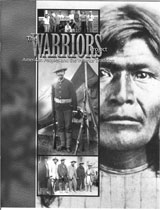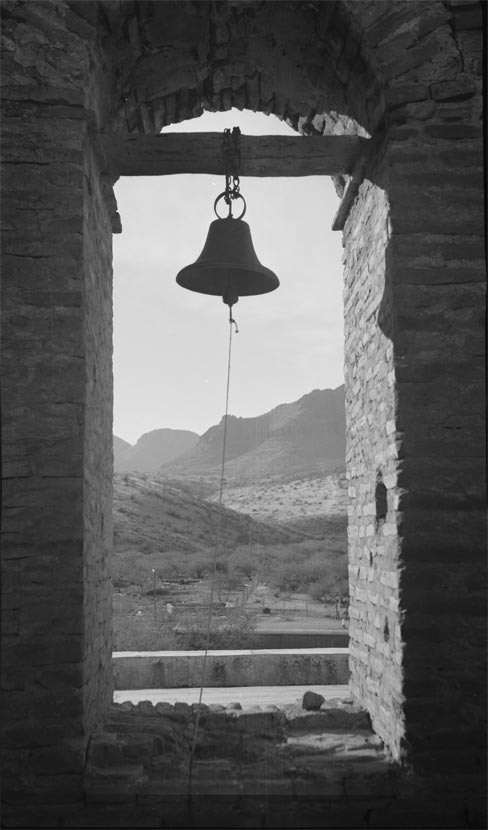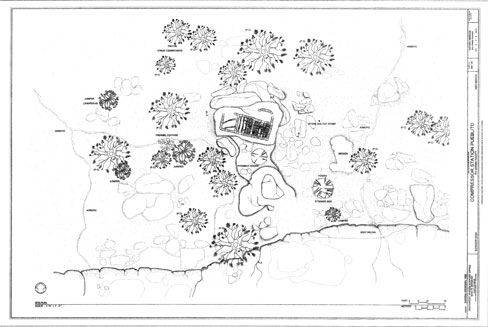Research Report
A Decade of Progressive Partnerships: CESUs and Cultural Resources in the NPS
by William Patrick O'Brien
Introduction: CESUs and the National Park Service
Scientific research and technical expertise are increasingly called upon to guide the policy decisions of federal land management, particularly in regard to the demands of long-term stewardship within an ecosystem context. Ecosystem studies draw on the biological, physical, social, and cultural sciences to address issues related to both natural and cultural resources. Despite the steady demand for useable, scientific knowledge and the recognition of the need for an interdisciplinary and multi-agency approach to resource management, funding sources at all levels are dwindling. Federal fiscal constraints are mirrored in academic institutions and private research organizations, meaning the scientific community is seeking new avenues for project sponsorship, such as that outlined by the Cooperative Ecosystem Studies Units (CESU).
CESU is "a network of cooperative units established to provide research, technical assistance, and education to resource and environmental managers."(1) Essentially, the CESU network represents a collaboration between the federal government and universities. Academic institutions provide the base of operations and so become the hub for each unit's geographical region. Scholarship is shared. So, too, are the costs. Federal agencies support their personnel while the participating organizations underpin their technical staff and offer monies for administrative and project expenses. Because the practitioners are so highly trained and the subject matter so specialized, CESUs are an efficient way to accomplish the nation's federal research business while engaging the public. In this way CESUs function alongside other cooperative agreements, interagency arrangements, and contracts awarded through the fair-bid process.
Four inaugural units were established in 2000, comprised of 20 universities in 13 states. Today there are 17 units located across the United States. Numerous participating agencies, not-for-profit partners, and host universities fall within the CESU network. Concurrently, the National Park Service issued its Natural Resource Challenge putting science and ecosystem concerns at the heart of the national park system. The challenge was introduced by the admission that—
For most of the 20th century, we have practiced a curious combination of active management and passive acceptance of natural systems and processes, while becoming a superb visitor services agency. In the 21st century that management style clearly will be insufficient to save our natural resources. [. . . ] Protection of these natural resources now requires active and informed management to a degree unimaginable in 1916. The lack of information about park plants, animals, ecosystems, and their interrelationships is profound. If we are to protect these resources into the far future, we must know more.(2) |
The same need for research, technical expertise, and education that fueled the establishment of CESUs prompted the challenge.(3) As a result, many projects relating to park resources have been undertaken through CESUs. These projects, while disproportionately focused on the stewardship of natural resources, include those that assist cultural resource management.
While it is true that all 17 CESUs promote cultural resource projects, this report reviews work done in the Intermountain Region of the National Park Service.(4) The Intermountain Region is unique in that it recruited CESU cultural resource specialists to oversee the CESU projects from the beginning. Research-oriented endeavors are highlighted here.
The Cultural Component of NPS Intermountain Region CESUs
In the Intermountain Region, cultural disciplines in the sciences and humanities have flourished under CESUs. These successes came about, in part, due to the expertise of the cultural resource personnel charged with overseeing the CESU endeavors. In 2001 the Intermountain Region placed the author, a cultural resource program manager, in its Tucson office where he assumed responsibility for the newly established Desert Southwest CESU. Even without dedicated funding from the Region, the DSCESU accrued over $300,000 and awarded projects to professors and graduate students. CESU personnel received adjunct faculty status at the host university.
In light of the DSCESU accomplishments, the Intermountain Region established two additional positions in 2003. Trinkle Jones, an archeologist with the NPS Western Archeological and Conservation Center in Tucson, became the Colorado Plateau CESU Cultural Resource Specialist. From 2003 to 2009, Christine Whitacre, an NPS historian and state coordinator with the National Historic Landmarks Intermountain Regional program, was the Rocky Mountain CESU Cultural Resource Specialist. Whitacre left the RMCESU Cultural Resource Specialist position and returned to the NPS Denver offices in mid-2009. This Rocky Mountains CESU function will be assumed by Pei-Lin Yu, an archeologist who has worked with the NPS, the USDA-Forest Service, and the Bureau of Reclamation, in addition to serving on the faculties at Boise State and Sacramento State. Yu brings to the job significant expertise with tribal partnerships, NAGPRA and considerable university teaching experience. As in the Desert Southwest, the new CESU officials arrange for projects, graduate internships, and related partnerships of varied scope and application.
The DSCESU realized a number of initiatives including administrative histories, ethnobotanical research, and consultation on the Native American Graves Protection and Repatriation Act (NAGPRA). An example of one of the CESU facilitated projects is the strategic planning document for partnerships in conserving and interpreting Spanish Colonial resources sponsored by San Antonio Missions, Salinas Pueblo, and Tumacacori National Park units and the University of Arizona School of Planning under the direction of Barbara Becker. A bilingual website based on the planning project was completed as an additional student and faculty endeavor. (Figure 1) Present managing partners for DSCESU are the University of Arizona's College of Architecture and Landscape Architecture led by Associate Dean R. Brooks Jeffery as well as Mexico's Instituto Nacional de Antropología e Historia.(5)
A cooperative research endeavor sponsored by the region's Workforce Enhancement Office and known as the Warriors Project depends on the successful solicitation of grants and matching funds through the CESU network. The program brings together African American and American Indian university students to research and discuss their mutual histories in the American West. (Figure 2) Over the past five years, students from Howard University, Haskell University, and the Mescalero Apache Nation have participated in a variety of projects including an archeological field school in the Guadalupe Mountains of New Mexico and folklore documentation by the Institute of Oral History at the University of Texas at El Paso. This research benefits a number of national park units: Fort Davis National Historic Site, Fort Union National Monument, Guadalupe Mountains National Park, Chiricahua National Monument, and Fort Bowie National Historic Site. In 2008 the program expanded, connecting USFS personnel in the Gila National Forest with Howard University students. The program spilled into the Midwest Region at Nicodemus National Historic Site in Kansas, where Howard faculty and students are continuing to explore Buffalo Soldier related sites at this historic African American 19th-century Exoduster settlement.(6)
 |
Figure 2. Cover illustration for the Warriors Project booklet. The Warriors Project is a national consortium of partners formed through the CESU network that promotes the interaction of African and Native American student study of their mutual histories in the American West. (Courtesy of Dennis Caldwell, Caldwell Design.) |
The Rocky Mountain CESU (RMCESU) cultural program sponsored a NAGPRA cultural affiliation study at Glacier National Park; a Save America's Treasures-funded archives project at Yellowstone National Park; a fire management archives project at Grand Teton National Park; and archeological surveys at Yellowstone, Grand Teton, and the Fort Laramie National Historic Site. In addition, the RMCESU allied with the region's Heritage Partnerships Program to bring university expertise to National Historic Landmarks (NHL) and the Heritage Documentation Programs(7) projects, including an archeological survey of the Tom Sun Ranch NHL, HABS documentation of pueblito sites in New Mexico, and HALS documentation of Skyline Park in Denver.(8) (Figure 3) University partners were the University of Montana, the University of Wyoming, and the University of Colorado, Boulder and Denver campuses.(9)
In the same period, the Colorado Plateau CESU cultural program facilitated projects as varied as Collections Management Plans for Navajo National Monument and Chaco Culture National Historic Park; mapping prehistoric structures at Canyon de Chelly National Monument, El Morro National Monument, Glen Canyon National Recreation Area, Grand Canyon National Park, Chiricahua, Navajo, and parks under the umbrella of the Vanishing Treasures Initiative; conducting Environmental and Administrative histories, Historic Resource Studies, and Historic Structures Reports at Sand Creek Massacre National Historic Site, Wupatki National Monument, Minidoka Internment National Monument, Roosevelt-Vanderbilt National Historic Sites, and Bryce Canyon National Park. Interdisciplinary efforts characterized the geoarcheology at Glen Canyon and the NAGPRA consultation at the Petrified Forest. Seven partners were active in a majority of the projects run at the Northern Arizona University (CESU host) and the University of Arizona.(10)
Conclusion
The CESU program is an effective a tool for research and preservation of cultural resources, as the three units in the Intermountain Region demonstrate. As an administrative entity, CESUs allow for multiple federal agencies and research institutions to act in partnership. As such, CESUs provide cost savings; funding flexibility (CESU funds can remain current for five years); dialogue within the academic, governmental, and non-governmental (NGO) communities; and collegial interaction.
Despite regular use by many federal agencies for a host of cultural resource research needs, CESU project oversight is typically assigned to personnel as collateral duty without the ability to function as members of the academic community as the Intermountain Region's base-funded, CESU staff members are able to do through the host universities. The Intermountain Region's endorsement of the program enhances the scholarly dialogue and cooperation that underlies the research, enables the sharing of technical expertise, and fosters educational opportunities that together are the hallmarks of the CESU network.
In the Intermountain Region, CESUs have supplied quality research and become a venue by which students and professors engage directly with the professionals responsible for the preservation and management of our nation's resources. As a result, the discussion about natural and cultural resource conservation and stewardship has been expanded to include a myriad of U.S. citizens—researchers, professors, students, administrators, and volunteers—all with a common objective: to pass on responsible management of our cultural heritage and natural legacy to future generations.(11)
About the Author
William Patrick O'Brien is the Program Manager for the Desert Southwest CESU Cooperative Ecosystem Studies Units. He can be reached at pat_o'brien@nps.gov or (520) 626-3966.
Notes
1. Definition and general description of CESUs were taken from the CESU website, http://www.cesu.org/ accessed 1 July 2009.
2. Natural Resource Challenge: The National Park Service's Action Plan for Preserving Natural Resources (Washington, DC: U.S. Department of Interior, 1999), 2. For more information about the challenge, see www.nature.nps.gov/challenge and Dale B. Engquist, "A Dialogue on the Natural Resource Challenge," George Wright Forum 18(4) (2001): 8-14.
3. A comprehensive administrative history of the entire CESU program is being completed by Diane Krahe of the University of Montana in cooperation with the national CESU administrative offices in Washington, DC under the direction of Tom Fish.
4. The Intermountain Region encompasses Arizona, Colorado, Montana, New Mexico, Oklahoma, Texas, Utah, and Wyoming. The main office is in Denver, with satellite programs in Tucson and Santa Fe. In 2001, there was an IMR office located in Tucson.
5. Barbara Becker, Tom Spangler, Bradford Stone, Erik Logan, et al., Mission Initiative Strategic Plan 2005 (Tucson: University of Arizona, 2005).
6. William Patrick O'Brien, Maceo C. Dailey, James Riding, "The Warriors Project: Diversity and the Interpretation of American History in the U.S. National Park Service," International Journal of Diversity in Organisations, Communities, and Nations 7(4) (2007): 285-91. For additional information, see http://academics.utep.edu. For more on Nicodemus, see Sherda Williams, "Excavation of an Early Dugout Homestead at Nicodemus, Kansas," CRM: The Journal of Heritage Stewardship 5(1) (2008): 84-87.
7. Heritage Documentation Programs is the umbrella program name for the Historic American Buildings Survey (HABS), Historic American Engineering Record (HAER), Historic American Landscapes Survey (HALS), and the Cultural Resource Geographic Information System Facility (CRGIS).
8. For more information about the HALS documentation of Skyline Park, see Ann Komara, "Recording a Mid-Century Modern Landscape in Denver, Colorado," CRM: The Journal for Heritage Stewardship 3(2) (Summer 2006): 94-98.
9. For complete information on each project listed in the text, see Rocky Mountain CESU project files, RMCESU Office, Missoula, Montana, Kathy Tonnesson, Coordinator.
10. For complete information on each project listed in the text, see Colorado Plateau CESU project files, CPCESU Office, Flagstaff, Arizona, Judy Bishoff, Coordinator.
11. Consult the CESU website, http://www.cesu.org/ for details about current CESU units, projects, personnel, and details about the network and its administration.


